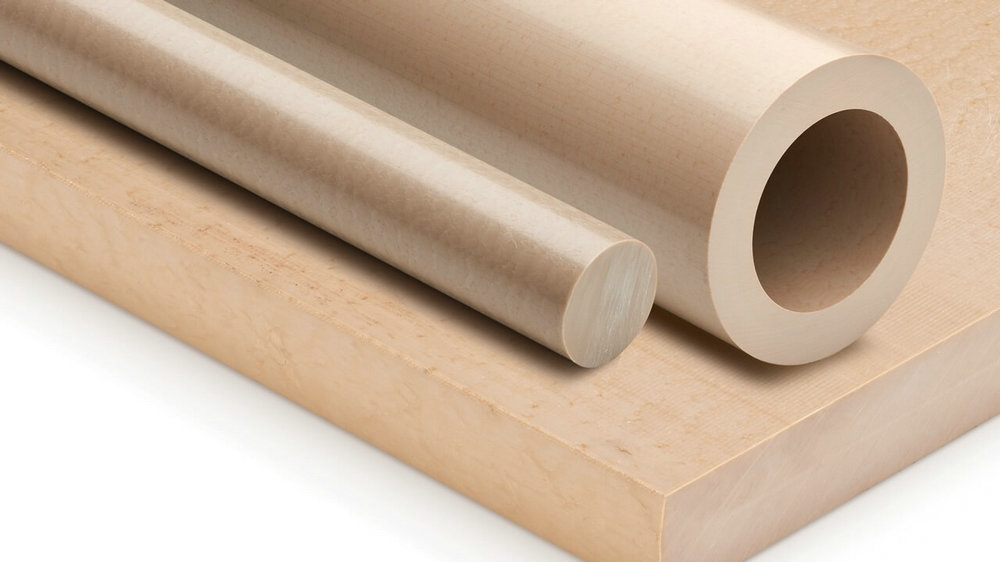
_______________________________________________________________________________________________________________________________________________________________________
In the era of rapid technological development, industries like aerospace, humanoid robotics, and new energy vehicles are demanding increasingly stringent material performance. Polyether ether ketone (PEEK), known for its high strength, high modulus, and outstanding mechanical stability, has gained significant attention this year. It excels in applications such as humanoid robot joints and new energy vehicle components.
PEEK is a semi-crystalline, thermoplastic aromatic polymer with a series of impressive characteristics.
High Temperature Resistance:
PEEK boasts a high glass transition temperature of 143°C and a melting point around 334°C. It can be used continuously at 260°C and even withstand short-term temperatures above 300°C.
High Strength and Modulus:
It exhibits tensile strength exceeding 100MPa, with excellent flexural strength and modulus. Additionally, it maintains good toughness and impact resistance, making it reliable under complex stress conditions without breaking.
Excellent Chemical Resistance:
PEEK resists most chemical agents, including organic solvents and acids/bases, maintaining performance even in highly corrosive environments.
Low Friction and Wear Resistance:
Ideal for manufacturing bearings and gears, it reduces wear and extends component lifespan.
Flame Retardancy and Electrical Insulation:
Its flame-retardant nature makes it suitable for electronics, while its electrical insulation properties meet the stringent requirements of electronic components.
Globally, PEEK production is dominated by a few major players:
Victrex (UK):
A world leader in PEEK manufacturing, known for advanced production techniques and extensive experience.
Evonik (Germany):
Another influential producer in the PEEK market.
In China, the production of PEEK is developing rapidly:
ARKPEEK:
As one of the earliest domestic PEEK manufacturers, it leads in production capacity and is innovating in high-end products like implant-grade PEEK, filaments, and wafer carriers.
Water Co., Ltd.:
This company is also investing heavily in PEEK, planning an annual polymerization capacity of 1000 tons, with initial production lines and equipment installations nearing completion.
Despite advancements, China's PEEK production still lags behind international standards in process refinement and quality stability. However, continued investment in R&D is expected to close the gap.
Lightweighting and performance enhancement are perpetual goals. PEEK's high strength, heat resistance, and low density make it ideal for aircraft engine parts, wing structures, and satellite components.
In particular, PEEK can replace traditional metals in hot-end engine components, reducing weight and improving fuel efficiency.
PEEK has outstanding biocompatibility and does not trigger immune responses, making it suitable for:
Artificial joints
Spinal implants
Dental restoration materials
Compared to metal implants, PEEK’s elasticity modulus is closer to that of human bone, reducing stress shielding and promoting bone growth and healing.
As electronics miniaturize and performance demands rise, PEEK is increasingly used for:
Circuit board insulation
Chip packaging
Electronic device housings
Connectors
Its high-temperature resistance and electrical insulation ensure stable performance in challenging environments, while flame retardancy and mechanical strength boost product safety.
With trends toward lightweight and electrification, PEEK is pivotal in:
Motor windings for EVs, improving heat and insulation resistance
Lithium battery seals for safety under harsh conditions
Transmission system components like bearings and gears, enhancing fuel economy and vehicle performance
PEEK thrives in harsh mechanical environments, ideal for:
Chemical pumps
Valves
High-wear industrial parts
Thanks to its corrosion and wear resistance.
Driven by technological and industrial advancements, PEEK’s future is highly promising.
According to Frost & Sullivan, the global PEEK market is expected to grow from 4.9 billion RMB (2022) to 8.4 billion RMB (2027), with a compound annual growth rate of 11.38%. In China alone, demand is forecasted to exceed 5000 tons, reaching a market value of 2.838 billion RMB by 2027.
Policy support is also boosting the sector. For instance, the National Raw Material Industry Symposium held in June 2024 emphasized building new growth engines like advanced materials — a boon for PEEK development.
Furthermore, new fields like humanoid robotics are expanding PEEK’s market. PEEK’s compatibility with the lightweight, high-strength, and high-precision demands of humanoid robots has already led to its adoption in joints, bearings, and gears, forming a complete industrial chain.